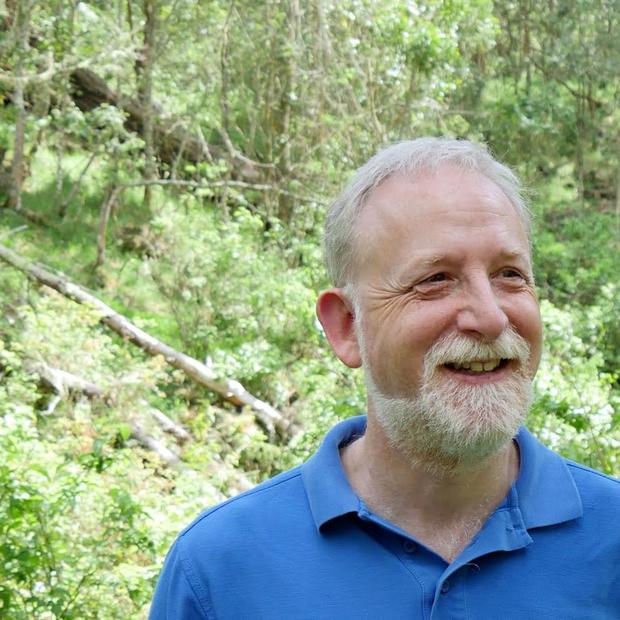Cities today present a sense of excitement and renewal, and an undeniable focus on more sustainable ways of life. A new generation of urban stakeholders is boldly experimenting with walkable, compact, and mixed-use neighborhood settings, including both public space and nearby transit. In the most dedicated urbanist circles, bikes supplant cars, “pop-up” places and uses expand, and other creative efforts such as “parking day” challenge conventional ways of thinking about urban land use and transportation.
Urban stakeholders — residents, developers, politicians, pundits — care deeply about cities, and frequently discuss the virtues of urbanism. While I find these discussions illuminating and commendable, I often note that even the most ambitious references to transit-oriented development, complete streets, walkability, or carbon neutrality ignore the basic underpinnings of urbanism. They underemphasize the rich backstory of urban history, including the many naturally-occurring aspects of city life.
What would we gain from a more deliberate inquiry into "urbanism without effort" and the fundamental principles of urban history? Understanding what lies beneath an enticing, well-scaled urban setting — a comfortable sidewalk café, children playing safely in an alleyway — can inform policy and planning efforts in ways that more fully resonate with the particular culture and context of a place. Without this historical backdrop, we are left with merely catchy ideas, plucked from a catalog of trendy, oversubscribed options.
Perhaps ironically, traditional and active close-knit spaces that encourage spontaneous human interactions are reemerging as key components of a more lively urban future. Contemporary discussions in America inadvertently embrace approaches that have worked for centuries elsewhere in the world. In the spirit of both déjà vu and amnesia (concepts combined by American actor/writer Steven Wright), past precedents implicitly live on. Once considered – but often forgotten – they remain core principles ripe for rediscovery.
Why not make today’s urbanist efforts even bolder by better explaining their basis and context? We achieve the most effective evolution of our urban landscapes only if we first challenge ourselves to fully understand the historical lessons of the world’s most successful cities, towns and neighborhoods.
This should come as no surprise. Successful community is among the first principles of the human condition; city dwellers invariably celebrate environments where they can coexist safely, in a mutually supportive way. Such celebration is most notable when it occurs spontaneously in what architectural theorist Christopher Alexander called the “natural” versus “artificial” city in his landmark 1965 article, “The City is Not a Tree.” It occurs more often in organic old world environments than in the new. It is premised on the successes of the unpredictable, disjointed and overlapping, rather than the prescriptive or planned.
Here’s an example.
On a recent Saturday night, in response to an email invitation that was unrelated to any city-sponsored program or effort of any organized community group, I went to the movies by walking 100 feet from my home. Admission was free. And the film was not shown in the comfort of an isolated home or downtown space, but in an everyday place, hidden and in plain sight: Monica and Michael’s alley, against Anne and Jerry’s retaining wall.
This “alley movie night,” which attracted some 20 neighbors, was an important reminder that a city neighborhood can experience community without prescription. We can try awfully hard — sometimes too hard, in my opinion — to extol the virtues of the city by proselytizing and debating ideas and opportunities as though we were inventing them for the first time, without acknowledging those instances in which the urbanism we already have can lead the way.
It would be easy for city staffs to collate existing instances of "alley movie night”-like activities in updates to visioning or planning documents. (This suggestion was made about an organic tradition of “ice cream feeds" in the City of Shoreline after one of my recent speaking engagements on the topic). But how do we reclaim and preserve this example of organic urbanism?
We must determine where and how to foster this kind of spontaneity, maybe by engaging the private sector to help out with maintaining and preserving places and projects that are too costly for today’s municipal public transportation and utility agencies. It’s not just about clearing away the dumpsters. As I’ve said before, public rights of way, stormwater system maintenance, pavement resurfacing and other forms of street improvement may be required in order to materially reinvent desired space. In addition, we need maintenance agreements between adjoining landowners and/or governing municipalities, in which the landowners agree to upkeep that is at a level consistent with public safety concerns.
We don’t all have traditional alleys at our back doors (which we often treat as main entries), but those of us who do can readily avail ourselves of this sort of "urbanism without effort," a neighborhood-based activity which has stood the test of time.
As we rethink approaches to urban planning and redevelopment, these organically evolved places — both past and present — offer striking examples of how to reshape the urban environment authentically.
After all, whether unintentionally or outright, today’s “placemaking” professionals often, with regard to the smallest parklet or the largest plaza, ponder how the prescriptive, planned and programmed can achieve what used to occur naturally and without intervention.
This piece was adapted from "Urbanism Without Effort," an e-book from Island Press. The subject of the book was partially inspired by the Seattle example explained above.



